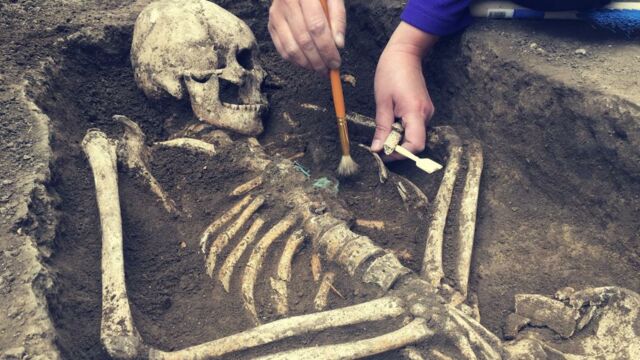When was the first amputation performed? The scientific consensus is that this surgical practice began to spread around 10,000 years before our era. But an archaeological discovery may change our beliefs about prehistoric medicine.
Discover our latest podcast
31,000 years of amputations
In a cave in Borneo, Indonesia, archaeologists have made an extremely exciting discovery of a skeleton missing its left leg. No, this leg did not disappear by chance. According to their analysis, these bones belonged to a young person who was amputated during a surgical operation 31,000 years ago. In their study, published in the journal Nature, the researchers explain:
This surprisingly early evidence of successful limb amputation suggests that at least some groups of modern human foragers in tropical Asia had developed sophisticated medical knowledge and skills long before the Neolithic agricultural transition.
Surgeons in prehistory
This discovery challenges many certainties. According to the consensus, amputation is a relatively 'recent practice (not before 10,000 BC). Our ancestors did not amputate because the risks of infection were too significant, or given the state of medicine at the time, infection was synonymous with death. Indeed, performing an amputation requires precise knowledge of anatomy.
However, there were no signs of postoperative complications and the amputee would have lived for 6 to 9 years after losing his left leg. According to The Guardian, Tim Ryan Maloney, the lead author of the study, was excited after finding this discovery. He said:
[It] dramatically changes the known history of medical intervention and knowledge of humanity.
It implies that early humans... mastered complex surgical procedures that allowed this person to survive after the removal of a foot and leg.
Prior to this discovery, the oldest evidence of amputation was found in France, on a 7000-year-old skeleton missing a forearm.
This article was translated from Gentside FR.
Read more:
⋙ Remarkable discovery of 1.8 million-year-old tooth that might belong to ancient human species
⋙ Skeletal remains of a 'vampire' woman from the 17th century discovered (PHOTO)
⋙ Skeletal remains of the oldest 'European' in history discovered by researchers















